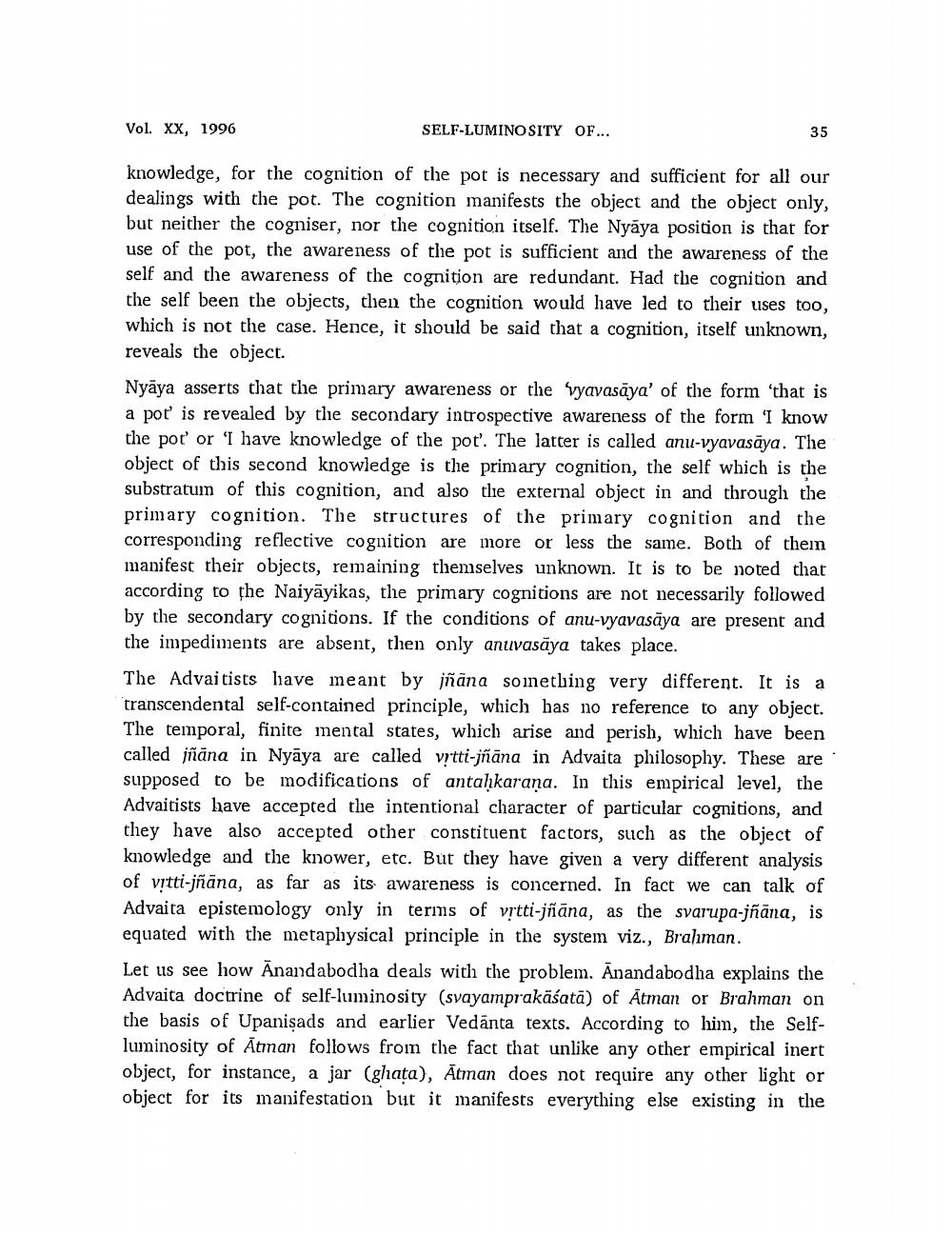________________
Vol. XX, 1996
SELF-LUMINOSITY OF...
35
knowledge, for the cognition of the pot is necessary and sufficient for all our dealings with the pot. The cognition manifests the object and the object only, but neither the cogniser, nor the cognition itself. The Nyāya position is that for use of the pot, the awareness of the pot is sufficient and the awareness of the self and the awareness of the cognition are redundant. Had the cognition and the self been the objects, then the cognition would have led to their uses too, which is not the case. Hence, it should be said that a cognition, itself unknown, reveals the object. Nyāya asserts that the primary awareness or the vyavasāya' of the form that is a pot is revealed by the secondary introspective awareness of the form 'I know the por' or 'I have knowledge of the pot. The latter is called anu-vyavasāya. The object of this second knowledge is the primary cognition, the self which is the substratuin of this cognition, and also the external object in and through the primary cognition. The structures of the primary cognition and the corresponding reflective cognition are more or less the same. Both of thein manifest their objects, remaining themselves unknown. It is to be noted that according to the Naiyāyikas, the primary cognitions are not necessarily followed by the secondary cognitions. If the conditions of anu-vyavasāya are present and the impediments are absent, then only anuvasāya takes place. The Advaitists liave meant by jñana soinething very different. It is a transcendental self-contained principle, which has no reference to any object. The temporal, finite mental states, which arise and perish, which have been called jñāna in Nyāya are called vitti-jñāna in Advaita philosophy. These are supposed to be modifications of antahkarana. In this empirical level, the Advaitists have accepted the intentional character of particular cognitions, and they have also accepted other constituent factors, such as the object of knowledge and the knower, etc. But they have given a very different analysis of vitti-jñāna, as far as its awareness is concerned. In fact we can talk of Advaita epistemology only in terms of vrtti-jñāna, as the svarupa-jñāna, is equated with the metaphysical principle in the system viz., Brahman. Let us see how Anandabodha deals with the problem. Anandabodha explains the Advaita doctrine of self-luminosity (svayamprakāśatā) of Atman or Brahman on the basis of Upanişads and earlier Vedānta texts. According to him, the Selfluminosity of Ātman follows from the fact that unlike any other empirical inert object, for instance, a jar (ghata), Ātman does not require any other light or object for its manifestation but it manifests everything else existing in the




